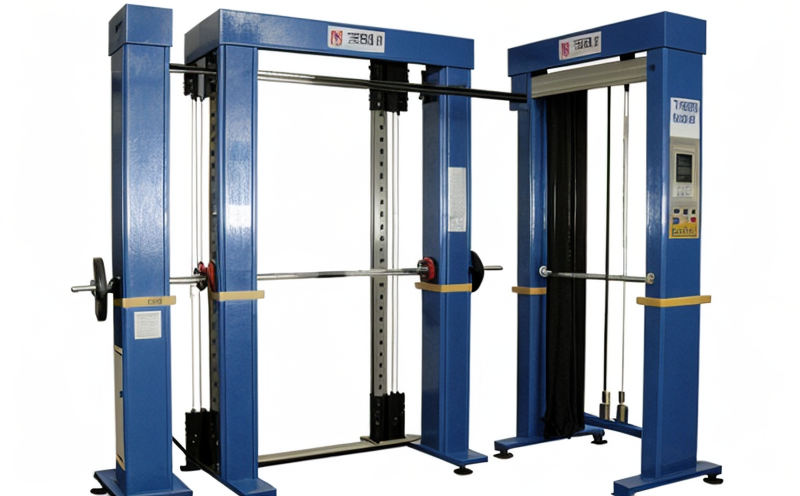CSA D3776 Mass per unit area of fabrics
The CSA D3776 standard is a North American specification that provides detailed guidelines for determining the mass per unit area (g/m²) of woven, knitted, and non-woven fabrics. This property is crucial in quality control processes as it ensures uniformity across production batches and helps in maintaining consistent product performance.
The test method outlined in CSA D3776 involves measuring the weight of a known area of fabric cut from multiple locations within the same batch to account for any variations in manufacturing. The precision of this measurement is critical, especially for industries where material specifications must be met with high accuracy. Fabric mass per unit area affects not only the physical properties like durability and stretch but also the overall look and feel of textile products.
The standard specifies that samples should be cut from at least five different locations on each fabric piece to ensure representative data. This is particularly important for non-woven fabrics, where inconsistencies in material composition can lead to variations in mass per unit area across a single sample. For woven and knitted textiles, this practice helps mitigate the effects of manufacturing irregularities such as warp or weft tension.
Instrumentation used for this test typically includes precision balances that are capable of measuring small increments accurately. The method requires accurate measurements to ensure that the results reflect true material properties rather than measurement inaccuracies. The standard also emphasizes the importance of controlled environmental conditions during sample preparation and testing, as variations in humidity or temperature can affect the mass per unit area.
The acceptance criteria for CSA D3776 are based on agreed-upon specifications from clients or industry standards. Compliance with these criteria ensures that the fabric meets the required performance levels set by manufacturers and buyers. This is especially important in sectors like automotive, where material integrity directly impacts safety and longevity of components.
In summary, the CSA D3776 test provides a standardized approach to assessing fabric mass per unit area, ensuring consistency and quality in textile production. By following this method, manufacturers can ensure that their products meet stringent quality control requirements and industry standards.
Eurolab Advantages
At Eurolab, we bring a wealth of expertise to your fabric testing needs with our state-of-the-art facilities and highly skilled team. Our CSA D3776 Mass per Unit Area Testing services are designed to meet the highest standards while offering several advantages:
- Accurate Measurements: Equipped with precision balances and a controlled environment, our testing ensures accurate mass per unit area measurements.
- Comprehensive Reporting: We provide detailed reports that include all relevant test parameters, ensuring you have the information needed for informed decision-making.
- Expertise in Fabric Testing: Our team of specialists has extensive experience in textile testing, offering insights beyond just compliance with standards.
- Fast Turnaround Times: We understand the importance of timely results and strive to deliver accurate reports within industry-standard timelines.
- Compliance Assurance: Our services are tailored to meet the specific requirements of your industry, ensuring full compliance with CSA D3776 and other relevant standards.
- Customer Satisfaction: We prioritize client satisfaction by offering reliable testing services that exceed expectations.
With Eurolab, you can rely on a partner who understands the intricacies of fabric testing and is committed to delivering high-quality results.
Environmental and Sustainability Contributions
The measurement of mass per unit area (g/m²) in fabrics plays a crucial role in promoting sustainability within the textile industry. By accurately quantifying the weight of materials, manufacturers can optimize their fabric usage, reducing waste and minimizing environmental impact.
This standard is particularly beneficial for companies committed to sustainable practices as it allows them to:
- Minimize raw material consumption by ensuring that only necessary amounts are used in production.
- Reduce energy consumption during manufacturing processes, as less raw material means lower processing demands.
- Improve recycling efforts by accurately measuring the weight of fabrics, making it easier to sort and process different materials post-production.
Incorporating CSA D3776 into your quality control protocols can lead to significant reductions in resource use and waste generation. This not only benefits the environment but also enhances corporate social responsibility initiatives.
Furthermore, accurate mass per unit area measurements contribute to creating textiles that are more durable and long-lasting, reducing the frequency of replacements and thereby extending product life cycles. This aligns with broader sustainability goals aimed at promoting circular economy principles within the textile sector.
Use Cases and Application Examples
The measurement of mass per unit area (g/m²) is essential across various industries, including automotive, apparel, home textiles, and industrial fabrics. Here are some specific use cases:
- Automotive Industry: Ensuring the correct mass per unit area in seat upholstery materials can enhance comfort while maintaining structural integrity.
- Fashion Apparel: Accurate measurement helps designers select optimal fabrics for clothing lines, ensuring both style and functionality.
- Home Textiles: For curtains and carpets, precise mass per unit area ensures the desired texture and durability.
- Industrial Fabrics: In sectors like construction and marine, consistent fabric weight is critical for performance in harsh environments.
In each of these industries, compliance with CSA D3776 helps manufacturers maintain product quality and meet customer expectations. By adhering to this standard, companies can ensure that their products are not only functional but also environmentally responsible.
For example, a manufacturer in the automotive industry may use the results from CSA D3776 testing to adjust production processes if they notice variations in fabric weight across different batches. This could lead to improvements in manufacturing efficiency and product consistency.





